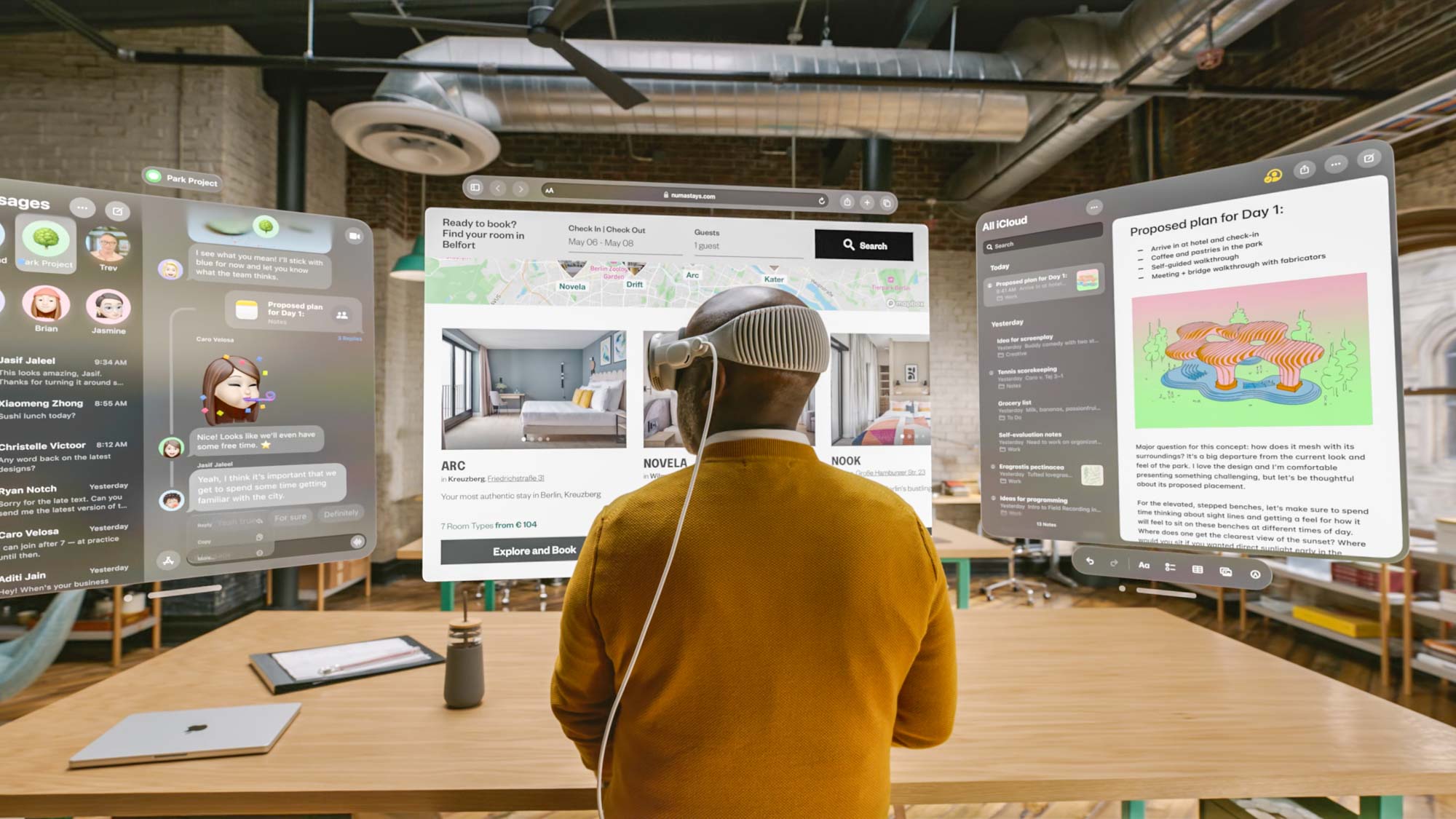Apple Vision Pro can be used as a Mac display — here's how it works

Apple was very eager to talk about the Apple Vision Pro headset at WWDC, praising all the different things it can actually do. Now Apple has clarified how one such feature works, since it wasn’t explained how the Vision Pro would function as a standalone Mac headset.
If you’re thinking logically, you might assume that the headset plugs into your Mac and beams the screen over through that physical connection. Well you would be wrong, because the process all happens wirelessly — but with no awkward set up.
In fact, Apple says porting your Mac display to the Vision Pro is as simple as looking at a compatible Mac.
That’s right, all you need to do is slip on the headset and look at your Mac computer. Provided you have the right one, the Vision Pro will then serve as a “private, portable 4K display” for your machine.
That connection then lets you place your Mac’s display anywhere in your local space, in a way that suits you best. According to Apple it’s possible to have separate windows for all your apps, arranged in whatever way works for you.
It’ll be interesting to see just how good the wireless connection is, and what sort of latency is involved. Given the headset’s $3,499 price tag you’d expect Apple to have gone all out to make it as seamless as a wired connection. But we’ll just have to wait and see how that plays out in the real world.
Vision Pro is more than just a screen

While the Vision Pro does work with your usual array of Mac accessories, like the Magic Keyboard of Magic Trackpad, you’re not stuck with your usual array of Mac-centric tools. As we noted in our Vision Pro hands-on, it’s possible to use a combination of eyesight and voice controls to get around.
Get instant access to breaking news, the hottest reviews, great deals and helpful tips.
In our case it was looking at the Safari address bar and saying the name of the website we wanted to visit. It’s also been mentioned that looking at a microphone can kickstart text dictation, and the Siri voice assistant can do all the usual things it can do — like opening apps or playing music.
The Vision Pro also supports a virtual keyboard, if you’d rather avoid bringing physical objects into the virtual space, using its tracking technology to see what you’re typing. Though without the tactile feedback of a physical set of keys, we’d wager few (if any) people will be able to touch type in this manner. But I could be proven wrong.

It’s not clear which Macs will be compatible with the headset, though it’s practically a given that they’ll have to run on Apple Silicon chips. Which chips is another question entirely, and not one we have an answer to. Since the Vision Pro runs on an M2 chip, we’d hope that everything from the standard M2 onwards will be compatible — but that’s no guarantee.
We’re just going to have to wait a little longer to find out for sure, and that may mean waiting until the Vision Pro’s 2024 release date. In the meantime you can read our Apple Vision Pro hands-on to find out what using the headset is like, or our Apple Vision Pro hub for a deep dive into the headset’s many features.
Plus, if you’re dead set on getting a headset for yourself, check out our Apple Vision Pro preorder guide.
More from Tom's Guide
- iOS 17 is another example of how Android updates are straight-up embarrassing
- I wore the Apple Vision Pro — and it's truly amazing (and a bit unsettling)
- Samsung Galaxy Unpacked may launch Galaxy Z Fold 5 in Korea instead of US

Tom is the Tom's Guide's UK Phones Editor, tackling the latest smartphone news and vocally expressing his opinions about upcoming features or changes. It's long way from his days as editor of Gizmodo UK, when pretty much everything was on the table. He’s usually found trying to squeeze another giant Lego set onto the shelf, draining very large cups of coffee, or complaining about how terrible his Smart TV is.
